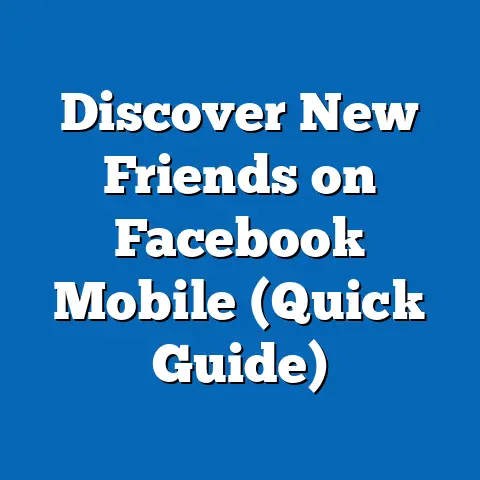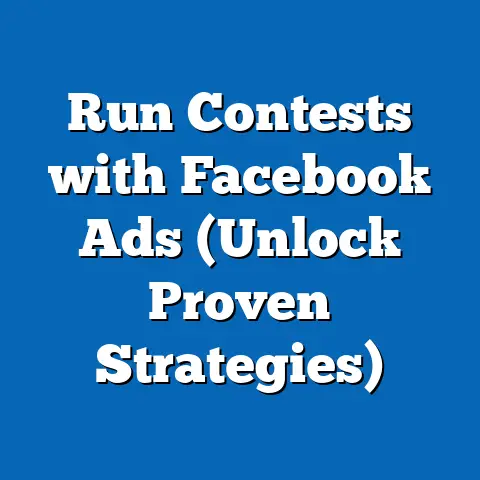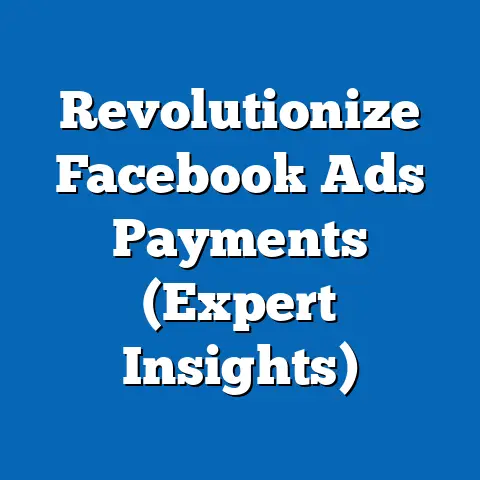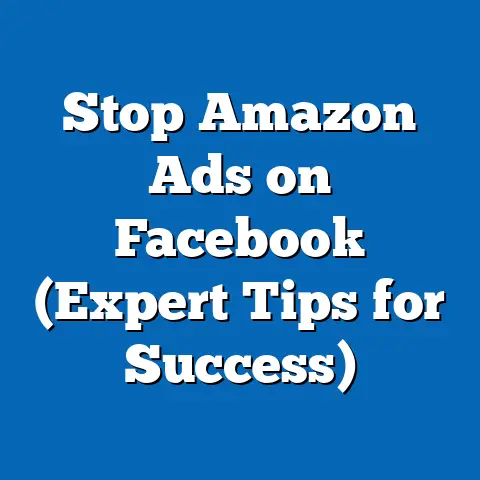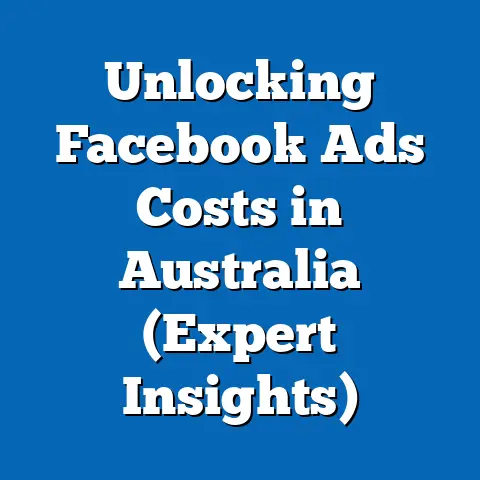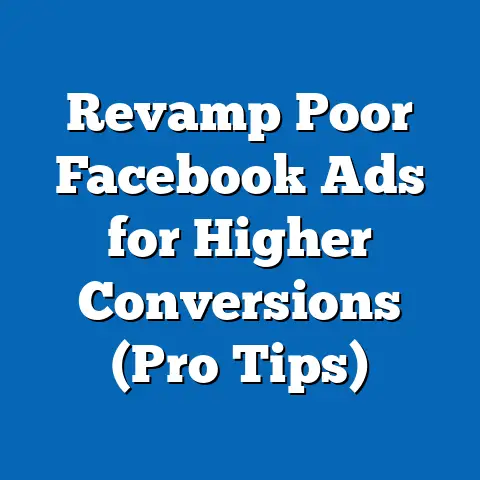Crafting Impactful Facebook Ads (Key Messaging Strategies)
The digital marketing landscape is a battlefield. Millions of businesses are vying for the same user’s attention, especially on platforms like Facebook. I’ve seen firsthand how many companies invest heavily in Facebook ads, only to be met with disappointing results. Why? Because they fail to create ads that truly resonate with their target audience. They end up with low engagement, poor conversion rates, and a lingering sense of “Where did all my money go?”
The secret sauce isn’t just throwing money at Facebook; it’s crafting effective messaging. It’s about creating ads that not only grab attention but also compel users to take action. In this article, I’m going to delve deep into the key messaging strategies that will help you cut through the noise, connect with your audience, and drive meaningful results with your Facebook ads. I’ll share my experiences, insights, and actionable tips that you can implement right away.
1. Understanding Your Audience: The Foundation of Effective Messaging
Before you even think about writing a single line of ad copy, you need to know who you’re talking to. Audience research isn’t just a nice-to-have; it’s the cornerstone of any successful Facebook ad campaign. I’ve seen campaigns completely flop simply because the advertiser hadn’t taken the time to truly understand their target audience.
Identifying and Segmenting Target Audiences
Facebook offers incredible tools for identifying and segmenting your target audiences. Facebook Audience Insights (while being phased out, its core principles still apply) and Facebook Analytics (also being phased out, but its replacement, Meta Business Suite Insights, is even more powerful) allow you to analyze demographics, interests, behaviors, and connections of people on Facebook.
- Demographics: Age, gender, location, education, job title – these are the basics. But don’t stop there.
- Interests: What pages do they like? What topics do they engage with? This gives you a glimpse into their passions and preferences.
- Behaviors: What are their online habits? Do they shop online? What devices do they use? This helps you understand how they interact with the digital world.
- Connections: Are they connected to your page? To your competitors’ pages? This helps you refine your targeting and identify potential customers.
I remember working with a local bakery that wanted to promote their new line of vegan pastries. Instead of just targeting “vegans,” we used Facebook’s detailed targeting to identify people who were interested in veganism, followed vegan influencers, and frequently visited vegan restaurants in the area. This hyper-targeted approach resulted in a significantly higher click-through rate and a surge in sales.
The Role of Customer Personas
Once you’ve gathered your data, it’s time to create customer personas. A customer persona is a semi-fictional representation of your ideal customer, based on research and data about your existing and potential customers.
- Give them a name: “Vegan Vanessa,” “Fitness Frank,” “Budget-Conscious Betty.”
- Describe their demographics: Age, location, income, education.
- Outline their goals and challenges: What are they trying to achieve? What obstacles are they facing?
- Identify their values and motivations: What’s important to them? What drives their decisions?
- Note their preferred communication channels: Where do they spend their time online? What type of content do they consume?
Having these personas in mind helps you tailor your messaging to resonate with specific audience segments.
Tailoring Messaging to Different Segments
Different audience segments will respond to different types of messaging. For example:
- Vegan Vanessa: Might be interested in the health benefits and ethical considerations of vegan pastries. Your ad copy could focus on the plant-based ingredients, the lack of animal products, and the positive impact on the environment.
- Fitness Frank: Might be interested in the nutritional value and low-sugar content of your pastries. Your ad copy could highlight the protein content, the healthy fats, and the fact that they’re a guilt-free treat.
- Budget-Conscious Betty: Might be interested in discounts and promotions. Your ad copy could offer a special deal on a box of vegan pastries or highlight the affordability of your products compared to other vegan options.
Key Takeaway: Deep audience research is the foundation of effective messaging. Use Facebook’s tools to identify and segment your target audiences, create detailed customer personas, and tailor your ad copy to resonate with each segment’s unique needs and interests.
2. Crafting a Compelling Value Proposition: What’s in it for Them?
A value proposition is a clear and concise statement that explains the benefits of your product or service. It answers the question, “Why should I buy from you?” In the crowded world of Facebook ads, a compelling value proposition is essential for capturing attention and driving conversions. I’ve seen too many ads that simply list features without explaining the benefits. That’s a surefire way to lose your audience.
Elements of a Strong Value Proposition
A strong value proposition should be:
- Clear: Easy to understand and free of jargon.
- Relevant: Directly addresses the needs and interests of your target audience.
- Unique: Differentiates your product or service from the competition.
It should also answer the following questions:
- What problem do you solve?
- What benefits do you offer?
- Why should I choose you over the competition?
Communicating Your Value Proposition Succinctly
In a Facebook ad, you have limited space to communicate your value proposition. You need to be concise and impactful. Here are some tips:
- Focus on the biggest benefit: What’s the one thing that your target audience cares about most?
- Use strong verbs and adjectives: Paint a vivid picture of the benefits.
- Include social proof: Testimonials, reviews, and case studies can build trust and credibility.
- Highlight your unique selling proposition (USP): What makes you different from the competition?
Real-World Examples
Let’s look at some examples of successful Facebook ads with strong value propositions:
- Dollar Shave Club: “A great shave for a few bucks a month. No more overpaying for razors.” This is clear, relevant, and unique. It addresses the pain point of expensive razors and offers a simple, affordable solution.
- Airbnb: “Book unique homes and experiences all over the world.” This is clear and relevant. It highlights the unique aspect of Airbnb – the ability to find unique accommodations and experiences that you wouldn’t find in a traditional hotel.
- Slack: “Where work happens.” This is concise and impactful. It positions Slack as the central hub for all work-related communication and collaboration.
I once worked with a small e-commerce business that sold handmade jewelry. Their initial Facebook ads simply showcased the jewelry without explaining the value proposition. We revamped their ads to highlight the unique craftsmanship, the use of high-quality materials, and the fact that each piece was one-of-a-kind. This resulted in a significant increase in sales and a stronger brand identity.
Key Takeaway: Your value proposition is the heart of your Facebook ad. Make sure it’s clear, relevant, unique, and communicated succinctly. Focus on the biggest benefit, use strong language, include social proof, and highlight your unique selling proposition.
3. The Power of Emotional Appeal: Connecting on a Deeper Level
Advertising isn’t just about logic; it’s about emotion. Consumers are driven by their feelings, and tapping into those emotions can be a powerful way to influence their behavior. I’ve learned that ads that evoke emotions are far more likely to be remembered and acted upon.
Psychological Aspects of Advertising
Emotions play a significant role in consumer decision-making. Here’s why:
- Emotions are memorable: We’re more likely to remember experiences that evoke strong emotions.
- Emotions influence behavior: Our feelings can override logic and drive us to take action.
- Emotions create connection: When we feel understood and connected to a brand, we’re more likely to become loyal customers.
Different Emotional Triggers
Here are some common emotional triggers that you can use in your Facebook ads:
- Fear: The fear of missing out (FOMO), the fear of being inadequate, the fear of losing something.
- Joy: Happiness, excitement, amusement, gratitude.
- Trust: Reliability, honesty, integrity, expertise.
- Sadness: Empathy, compassion, nostalgia.
- Anger: Outrage, frustration, injustice.
Examples of Emotionally Evocative Ads
- Dove’s “Real Beauty” campaign: This campaign challenges traditional beauty standards and celebrates the diversity of women. It evokes emotions of empowerment, self-acceptance, and body positivity.
- Always’ “Like a Girl” campaign: This campaign challenges gender stereotypes and encourages girls to embrace their strength and potential. It evokes emotions of pride, inspiration, and empowerment.
- Coca-Cola’s holiday ads: These ads often depict families and friends coming together during the holidays, evoking emotions of warmth, love, and nostalgia.
When using emotional appeals, it’s crucial to be authentic and genuine. Don’t try to manipulate your audience or exploit their emotions. Focus on connecting with them on a human level and offering them something of value.
I remember working with a non-profit organization that was raising money for children in need. Instead of just showing statistics and numbers, we created a video that told the story of one child whose life had been transformed by the organization’s work. The video evoked emotions of empathy, compassion, and hope, and it resulted in a significant increase in donations.
Key Takeaway: Emotions drive consumer behavior. Tap into the power of emotional appeal by understanding the psychological aspects of advertising, identifying different emotional triggers, and creating ads that connect with your audience on a deeper level. Remember to be authentic and genuine in your messaging.
4. Utilizing Storytelling Techniques: Creating a Narrative
Storytelling is one of the most powerful tools in marketing. Stories have the ability to capture our attention, evoke our emotions, and create a lasting impression. I’ve found that ads that tell a story are far more engaging and memorable than ads that simply list features and benefits.
Elements of a Good Story
A good story typically includes the following elements:
- Character: A relatable protagonist that the audience can connect with.
- Conflict: A challenge or problem that the character must overcome.
- Resolution: The outcome of the story – how the character overcomes the conflict and achieves their goal.
Applying Storytelling to Facebook Ads
Here are some ways to incorporate storytelling into your Facebook ads:
- Tell a customer success story: Share a story about how your product or service helped a customer overcome a challenge and achieve their goals.
- Share your brand’s origin story: Tell the story of how your company was founded and what inspired you to create your product or service.
- Create a fictional narrative: Develop a short story that features your product or service as a key element.
Examples of Brands Using Storytelling
- Nike: Nike’s ads often tell stories of athletes overcoming adversity and achieving their dreams. These stories inspire and motivate viewers, and they associate Nike with qualities like determination, perseverance, and success.
- Apple: Apple’s ads often tell stories of how their products empower people to be creative, productive, and connected. These stories highlight the benefits of Apple products and create a sense of community among Apple users.
- GoPro: GoPro’s ads often feature user-generated content that tells stories of adventure, exploration, and personal achievement. These stories showcase the versatility of GoPro cameras and inspire viewers to capture their own adventures.
I once worked with a local coffee shop that wanted to promote their new blend of coffee beans. Instead of just listing the origin and flavor notes, we created a series of Facebook ads that told the story of the coffee beans – from the farmers who grew them to the roasters who perfected the blend. The ads included photos and videos that showcased the entire process, creating a sense of connection and authenticity.
Key Takeaway: Storytelling is a powerful tool for capturing attention, evoking emotions, and creating a lasting impression. Incorporate storytelling into your Facebook ads by telling customer success stories, sharing your brand’s origin story, or creating fictional narratives.
5. The Importance of a Clear Call-to-Action (CTA): Guiding the User
A call-to-action (CTA) is a button or link that prompts users to take a specific action. It’s the final piece of the puzzle in your Facebook ad campaign. I’ve seen countless ads that have great copy, compelling visuals, and targeted audiences, but they fail to include a clear and effective CTA. As a result, they miss out on valuable conversions.
Characteristics of an Effective CTA
An effective CTA should be:
- Clear: Easy to understand and unambiguous.
- Urgent: Creates a sense of urgency and encourages immediate action.
- Relevant: Aligned with the overall message of the ad and the user’s intent.
Different Types of CTAs
Here are some common types of CTAs that you can use in your Facebook ads:
- Shop Now: For e-commerce businesses selling products online.
- Learn More: For businesses that want to educate users about their products or services.
- Sign Up: For businesses that want to collect leads or build their email list.
- Download: For businesses that want to offer free resources like e-books or guides.
- Contact Us: For businesses that want to provide customer support or answer questions.
Positioning and Style
The positioning and style of your CTA can also influence its performance.
- Placement: Place your CTA in a prominent location where it’s easy to see and click.
- Color: Use a color that contrasts with the background of your ad.
- Size: Make your CTA large enough to be easily clickable on mobile devices.
- Wording: Use strong action verbs that encourage users to take action.
I once worked with a local restaurant that was running Facebook ads to promote their online ordering service. Their initial ads included a generic “Order Now” CTA, but we decided to experiment with different wording and placement. We tested CTAs like “Order Dinner Now,” “Get 15% Off Your First Order,” and “Satisfy Your Cravings.” We also moved the CTA from the bottom of the ad to the top, near the headline. These simple changes resulted in a significant increase in online orders.
Key Takeaway: A clear and effective CTA is essential for driving conversions with your Facebook ads. Make sure your CTA is clear, urgent, and relevant. Experiment with different types of CTAs, positioning, and styles to optimize its performance.
6. Testing and Iterating Your Messaging: Continuous Improvement
The world of Facebook advertising is constantly evolving. What works today might not work tomorrow. That’s why it’s crucial to continuously test and iterate your messaging to stay ahead of the curve. I’ve learned that the most successful Facebook advertisers are the ones who are always experimenting and adapting.
The Importance of A/B Testing
A/B testing, also known as split testing, is the process of comparing two versions of an ad to see which one performs better. It’s a powerful way to optimize your messaging and improve your ad performance.
Elements to Test
Here are some elements that you can test in your Facebook ads:
- Headlines: Test different headlines to see which one captures the most attention.
- Images: Test different images to see which one resonates most with your target audience.
- Ad Copy: Test different ad copy to see which one communicates your value proposition most effectively.
- CTAs: Test different CTAs to see which one drives the most conversions.
- Targeting: Test different targeting options to see which audience segments respond best to your ads.
Interpreting Data and Making Adjustments
Once you’ve run your A/B tests, it’s time to analyze the data and make adjustments to your messaging.
- Track your key metrics: Click-through rate (CTR), conversion rate, cost per click (CPC), return on ad spend (ROAS).
- Identify the winning variations: Which headlines, images, ad copy, and CTAs performed best?
- Implement the winning variations: Replace the underperforming elements with the winning ones.
- Repeat the process: Continuously test and iterate your messaging to stay ahead of the curve.
I once worked with an e-commerce business that was struggling to generate sales with their Facebook ads. We decided to run a series of A/B tests to optimize their messaging. We tested different headlines, images, and CTAs. We discovered that ads with customer testimonials performed significantly better than ads without them. We also found that ads with images of people using the product performed better than ads with product-only images. By implementing these changes, we were able to significantly improve their ad performance and generate a substantial increase in sales.
Key Takeaway: The key to success with Facebook advertising is continuous improvement. Use A/B testing to optimize your messaging and improve your ad performance. Track your key metrics, identify the winning variations, implement the changes, and repeat the process.
Conclusion: The Art and Science of Facebook Ad Messaging
Crafting impactful Facebook ads is both an art and a science. It requires a deep understanding of your audience, a compelling value proposition, emotional appeal, storytelling techniques, a clear call-to-action, and a commitment to continuous testing and iteration.
I’ve shared my experiences, insights, and actionable tips that you can implement right away to improve your Facebook ad messaging. Remember to:
- Understand your audience: Conduct thorough audience research and create detailed customer personas.
- Craft a compelling value proposition: Clearly communicate the benefits of your product or service.
- Leverage emotional appeal: Connect with your audience on a deeper level by evoking emotions.
- Utilize storytelling: Capture attention and create a lasting impression with engaging narratives.
- Incorporate a clear CTA: Guide users to take the desired action.
- Test and iterate your messaging: Continuously optimize your ads to stay ahead of the curve.
By mastering these key messaging strategies, you can cut through the noise, connect with your audience, and drive meaningful results with your Facebook ads. So, go out there and create ads that not only capture attention but also inspire action! Good luck!

